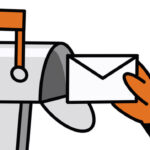It’s that time of year again when spooky season is in full swing, and while classics like Michael Jackson’s “Thriller” dominate playlists, there’s another Halloween-adjacent anthem that deserves just as much, if not more, recognition: the “Ghostbusters” theme song by Ray Parker Jr. Hearing it unexpectedly in a store recently brought back a wave of nostalgia and a renewed appreciation for this absolute banger. Like many, I went through phases with this song – childhood adoration, teenage embarrassment, young adult amnesia, and finally, mature appreciation. Having watched the movie countless times and worn out my cassette soundtrack as a kid, it’s only now that I truly understand the lasting appeal of this track and why dismissing it was a youthful mistake.
Let’s address the elephant in the room, or rather, the lawsuit in the courtroom: the similarities to Huey Lewis’s work. While the underlying riff might share some common blues DNA, a genre rich with similar patterns for over a century, the accusation of direct plagiarism feels thin. Perhaps a passing resemblance in phrasing or the initial horn notes? Maybe a similar overall “vibe”? To an unbiased ear, these are tenuous connections at best. Personal preference aside, Ray Parker Jr.’s “Ghostbusters” stands firmly on its own merits, arguably surpassing any perceived similarities in sheer infectiousness and originality.
What makes the “Ghostbusters Theme Song” so undeniably captivating? One key element is the intricate musicality cleverly disguised within its pop sensibility. Take, for instance, a section starting around 0:46. Is it the hook? The chorus? Whatever you call it, it’s musical genius. Beneath the surface of what sounds like a simple, fun tune, lies a sophisticated rhythmic interplay. The synth part, with its pairs of dotted sixteenth notes, creates a mesmerizing pattern that subtly dances around the solid four-on-the-floor drum beat. This synth line, cycling in and out of sync with the drums, builds a layer of rhythmic complexity that’s both intellectually interesting and viscerally groovy. Meanwhile, the bassline provides a grounding counterpoint, unfolding in dotted half notes that stretch across the synth’s shorter cycles. There’s a beautiful musical conversation happening here, a contrapuntal texture where the bass descends through the B Dorian mode (root, flat seventh, sixth, and fourth), while the synth persistently repeats the third and root. This creates a harmonic and rhythmic tension and release that is both subtle and incredibly effective in driving the song forward. For a visual representation of this rhythmic interplay, consider this MIDI visualization:
MIDI visualization showing the circular rhythmic patterns of the synth and bass lines in the Ghostbusters theme song.
My past embarrassment about unironically enjoying the “Ghostbusters theme song” stemmed from a misguided youthful snobbery. How could something so overtly joyful and purely fun be considered “good” music? The synthesizers and drum machines – surely those were musically “inauthentic”? And Ray Parker Jr.’s confident, almost playful delivery? It all felt…uncool. Thankfully, those were the shackles of a narrow-minded, rockist perspective. Breaking free from such musical prejudice has been incredibly liberating, allowing for a much broader and richer appreciation of music in all its forms.
Ray Parker Jr.’s talent extends far beyond this iconic theme song. He’s a prolific and versatile musician who has contributed to an impressive range of genres and artists. His guitar work graces Stevie Wonder’s songs, adding his signature touch to classics. He co-wrote and played on the Rufus and Chaka Khan hit, showcasing his songwriting and instrumental prowess. Jazz fusion fans will recognize his guitar on Jean-Luc Ponty albums alongside Patrice Rushen, highlighting his adaptability and skill across genres. He even contributed to Herbie Hancock’s groovier tracks, demonstrating his funk sensibilities. His guitar also features on Bill Withers classics and disco anthems, further cementing his place as a sought-after musician. Beyond session work, Ray Parker Jr. achieved considerable success with his band Raydio, delivering hits showcasing his knack for catchy melodies and funky rhythms. He even ventured into production, crafting tracks for bands like Brick.
This Halloween season, it’s time to put some serious respect on Ray Parker Jr.’s name. The “Ghostbusters theme song” is more than just a catchy movie tie-in; it’s a masterclass in pop songwriting and a testament to Ray Parker Jr.’s multifaceted musical genius. So crank it up, embrace the joy, and let the spooky, funky vibes of “Ghostbusters” soundtrack your Halloween celebrations.

